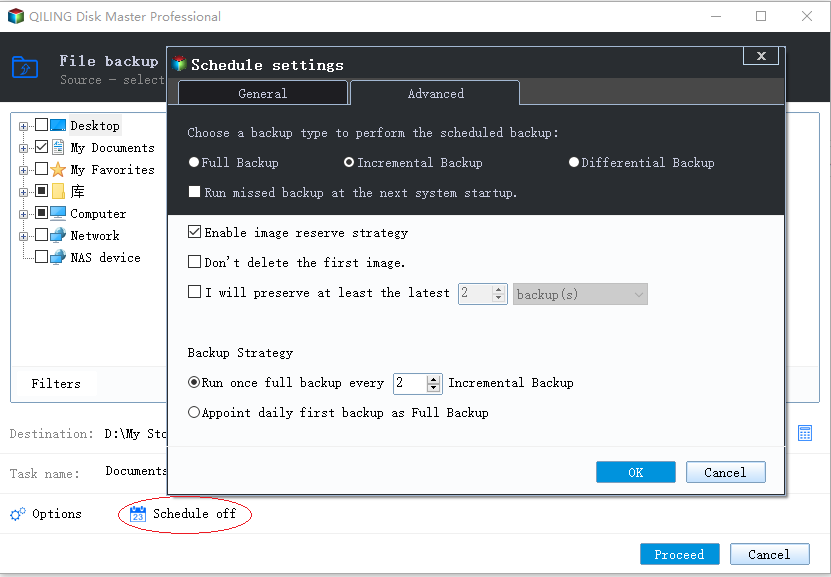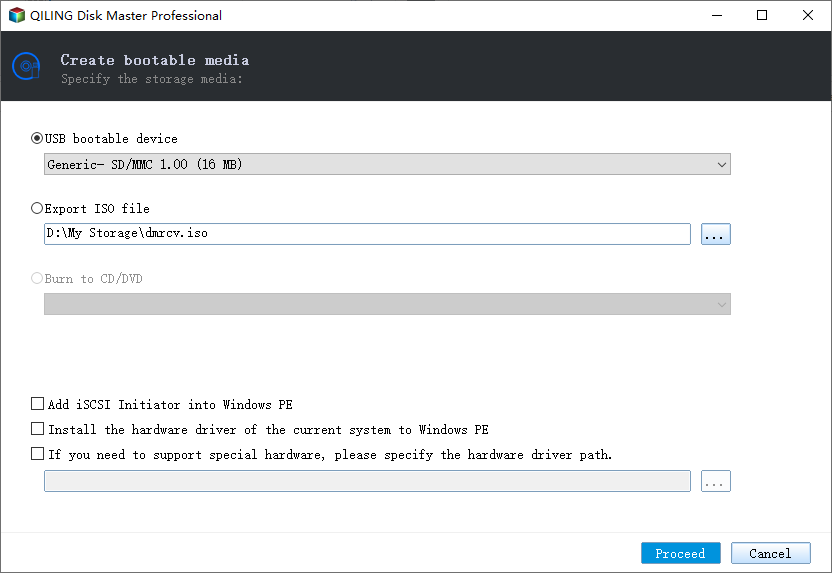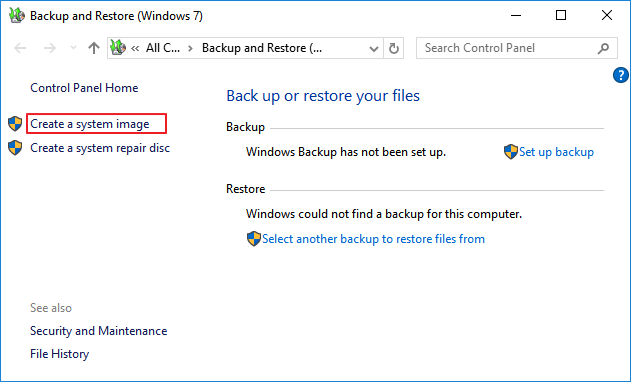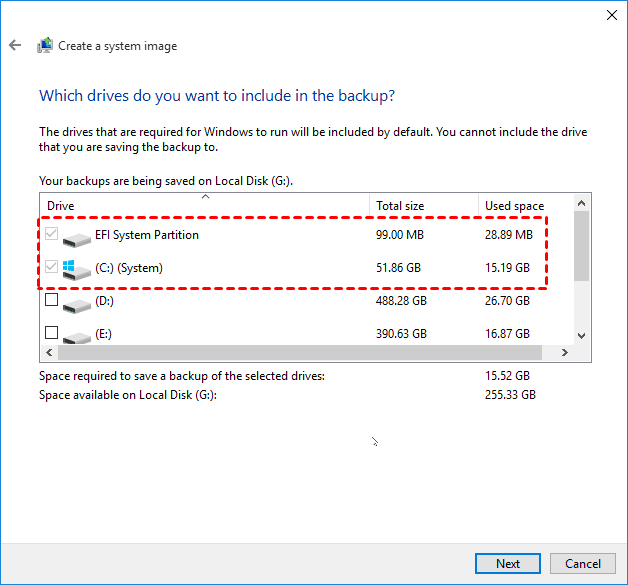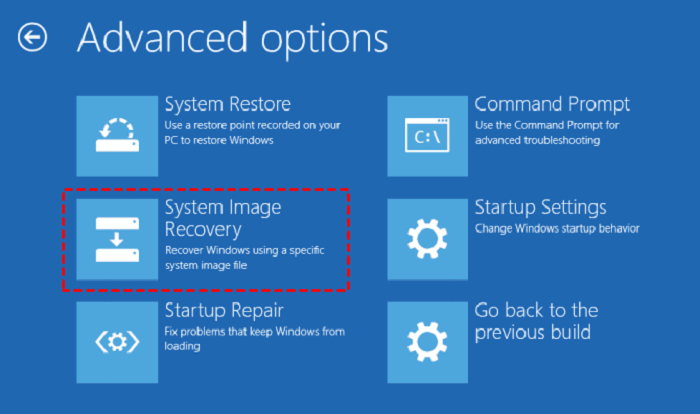How to Create Bootable Backup in Windows 10 (2 Ways)
The importance of Windows 10 bootable backup
In general, a bootable backup (also called system backup or disk backup) is an exact replica of your working system, which will include the system partition and system-related partitions. And you can restore system image to new hard drive or the original one when your computer goes wrong and boot from it.
Unexpected computer problems can happen to everyone at any time due to system crashes, virus attack, and human errors, etc. Worse still, your computer may refuse to boot. System reinstallation is not a good idea, because all contents on the drive will be overwritten during the process.
In addition, reinstalling a system is often a complex and time-consuming process to perform. If you’re in a situation like this, you can start everything from the beginning by using a bootable backup of Windows.
How to make a bootable backup of Windows 10
If you don't have a bootable backup for Windows 10 yet, now it is time to create one. To do so, two practical methods are highly recommended. One is using third-party free backup software, and the other is using Backup and Restore (Windows 7). Let's take a detailed look at each of these steps.
- Method 1. Create a bootable image in Windows 10 with third-party tool
- Method 2. Create a bootable backup in Windows 10 with built-in tool
Method 1. Create a bootable image in Windows 10 with third-party tool
Qiling Disk Master Standard is definitely the best free backup software for Windows 10. With its intuitive interface and simple operation steps, you can easily create a bootable backup of Windows 10. And you can create system image for Windows 10 on USB drives, external disks, cloud drives, NAS devices, and network, etc. Below are some highlights of it:
- Create Windows bootable backup automatically: it supports auto backup based on daily, weekly or monthly, so you can continuously protect system partition.
- Greatly save disk space while backing up: it uses incremental backup by default, which backup only changes since last backup. And you still can enjoy other disk saver, such as, normal compression, intelligent sector backup, automatic splitting, etc.
- Other backup types: Besides System Backup, it still supports Disk Backup, Partition Backup and File Backup.
Above all, it is free to download and use (supports Windows 11/10/8.1/8/7/Vista/XP currently). For server users, try Qiling Disk Master Server.
Now you can follow the steps below to make a bootable backup for Windows 10. And these steps also apply to bootable backup for Windows 7/8/11.
Step 1. Launch this freeware, click System Backup under Backup tab.
Step 2. Change the Task Name as you like. The related system partitions are selected by default. Select the destination path by clicking the bar at the lower location.
Step 3. Confirm your operations and then click Proceed to create bootable backup in Windows 10.
You may also set more backup options to make it automatic and hassle-free:
Options: You can set Windows 10 email notification to see if your operation is completed successfully, enable encryption for backup (upgrade is required) to prevent unauthorized access, high compression to make the backup image small, etc.
Schedule Backup: You can not only backup system in daily, weekly, monthly, but also using Event trigger and USB plug in (to backup computer to USB flash drive automatically when it's plugged in.) The last two features are available on the professional vesion.
Backup Scheme: You can change default backup method to differential backup in the advance version. Also, deleting old backup images with By quantity, By time, By daily/weekly/monthly are supported.
This freeware works well as a bootable rescue media creator. You’d better use it to create a bootable media, which can help you restore the system if your computer fails to boot.
In this case, you should first connect the bootable media to your computer and boot from it. After booting, you will see its main page just like in the Step 1. Please go to Home -> select the System Backup task -> Restore to start the system image recovery.
Also, it's a good choice to create a recovery environment in Windows 10 if you don't have USB or CD/DVD and boot from it at the next system startup. Then, you can perform system restore with above steps.
Tip on creating Windows bootable backup in Windows 10 flexibly:
Except for Qiling Disk Master Standard, you still can try another reliable software to make bootable image in Windows, it's one key recovery software Qiling Disk Master Professional. And it allows you to set fast key (F11 or A) to boot from it, thus you don't need to create a bootable media separately. Daily, Weekly, Monthly schedule backup are supported.
Method 2. Create a bootable backup in Windows 10 with built-in tool
Backup and Restore (Windows 7) is said to be an older backup, which means you still can use it to create a system image in Windows 10, but Microsoft does not update or maintain it. If you insist on using it, you can try the following steps. However, there is a chance that you encounter the Windows 10 backup not working issue.
Step 1. Open Control Panel, and click System and Security. Then, Select Backup and Restore (Windows 7) from the list.
Step 2. Click Create a system image on the left pane.
Step 3. Select the destination to save the backup (On a hard disk, On one or more DVDs or On a network location). Then click Next.
Step 4. The drives that are required for Windows to run are included by default. You can add additional drives to be backed up if you want.
Step 5. Confirm your system backup settings and then click Proceed.
Wait for the backup process to be completed, you will be asked to create a system repair disc, click Yes to create one if you have CD/DVD. It helps you boot your computer when it fails. If not, you can choose to create a recovery drive with Recovery Drive feature in Windows 10.
Once your compuer crashes or run into issues, you need to connect the repair disc to your computer and boot from it. Then, click Next until you see repair your computer, select it and then Troubleshoot > Advanced options > System Image Recovery to perform system restore.
Verdict
This tutorial contains two practical methods to create a bootable backup for Windows 10. I recommend you use Qiling Disk Master Standard to do bootable backups, as it is not only easy to use but also provides you with many advanced options, such as, schedule automatic backup Windows 10, backup Windows 10 on system shutdown, delete backup files to free up disk space, etc.
By the way, this freeware serves you well when you need a bootable clone for Windows 10. In addition, it is able clone hard drive in Windows 10, replace laptop HDD with SSD, clone Samsung SSD to Samsung SSD, etc.
Related Articles
- Fixed: "File History Element Not Found" Error on Windows 10
You can find solutions to fix the “File History element not found” error on this page. If you don't want to encounter this error again, try a professional backup software. - How to Backup SD Card Data Before Formatting-4 Ways Included
You can learn how to backup SD card data before formatting on this page. 4 effective methods are provided. Choose the one that suits you best. - Best PC Backup Cloud Storage: Preview and Full Tutorial
Have a preview of PC backup cloud storage and follow the best solutions to achieve backing up PC files or entire PC to cloud. Get to know the details below. - Best Synology File Recovery Tools to Recover Files on/from NAS
Synology file recovery tools help you recover deleted files on Synology NAS and lost data on a PC from Synology NAS. Learn how to do it from this article.




